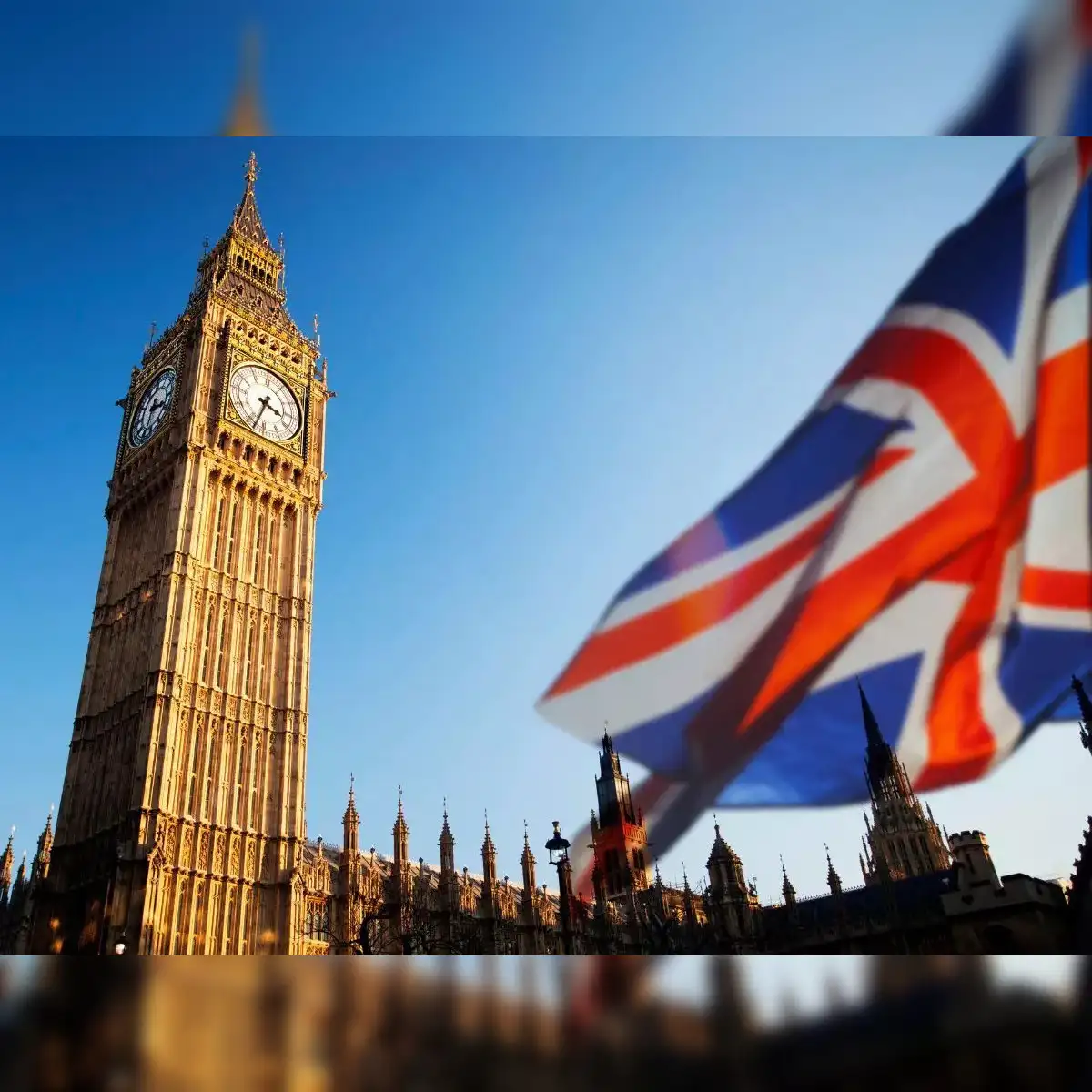The United Kingdom has experienced a dramatic shift in its migration landscape in 2024, with net migration halving to 431,000 from a record high of 860,000 in 2023, according to the Office for National Statistics (ONS). This significant decline, driven by stricter visa regulations and changing global dynamics, marks a pivotal moment in the UK’s ongoing efforts to manage immigration. This article delves into the factors behind this reduction, the policy changes that shaped it, the economic and social implications, and the broader context of migration in the UK. By exploring hidden truths, recent research, and stakeholder perspectives, we aim to provide a nuanced understanding of this complex issue.
The Decline in Net Migration: Key Drivers
The ONS reported that net migration—defined as the difference between the number of people arriving in the UK and those leaving—fell by 50% in 2024. This reduction was primarily attributed to a sharp decline in arrivals on work and study visas, alongside an increase in emigration, particularly among international students whose visas expired.
Visa Rule Changes: A Policy Shift
The Conservative government, in power until July 2024, introduced stringent visa reforms in 2023 aimed at curbing immigration. These reforms included raising the minimum salary threshold for skilled foreign workers and imposing restrictions on the ability of workers and students to bring dependents. The impact was immediate: immigration for work dropped by 49%, while study-related immigration decreased by 17%. The number of dependents accompanying visa holders also saw a significant decline.
“We are seeing reductions in people arriving on work- and study-related visas, and an increase in emigration over the 12 months to December 2024,” the ONS stated, highlighting the direct correlation between policy changes and migration trends.
These measures were a response to political pressures, particularly from Nigel Farage’s Reform UK party, which has consistently advocated for stricter immigration controls. The Labour government, led by Prime Minister Keir Starmer since July 2024, has continued this trajectory, promising further reductions in net migration to address public concerns.
Emigration Trends: The Role of International Students
A significant factor in the 2024 migration decline was the departure of international students who had arrived in large numbers post-COVID-19. When pandemic travel restrictions were lifted in 2021 and 2022, the UK saw a surge in international students, particularly from non-EU countries such as India, Nigeria, and Pakistan. However, as their visas expired in 2024, many left the country, contributing to the rise in emigration.
Research from the Migration Observatory at the University of Oxford highlights that international students often stay in the UK for only a few years, with many returning to their home countries upon completing their studies. This cyclical pattern, combined with tightened visa rules, has amplified the emigration trend in 2024.
Political Context: Immigration as a Perennial Issue
Immigration has been a contentious issue in UK politics for over a decade, shaping major events such as the 2016 Brexit referendum. Public frustration over both legal and illegal migration has fueled the rise of anti-immigration sentiments, with parties like Reform UK capitalizing on these concerns. The record-high net migration of 906,000 in the year to June 2023 intensified these debates, placing pressure on both the Conservative and Labour governments to act decisively.
Brexit and Its Lasting Impact
The UK’s decision to leave the European Union was driven, in part, by a desire to “take back control” of borders. Post-Brexit, the UK introduced a points-based immigration system in 2021, prioritizing skilled workers and reducing low-skilled migration from the EU. While this system initially led to a drop in EU migration, it coincided with a rise in non-EU migration, particularly from countries like India and Nigeria, which filled labor gaps in sectors such as healthcare and technology.
However, the 2024 data indicates a reversal, with non-EU immigration declining significantly. This shift reflects not only visa rule changes but also global economic and political factors, such as improving opportunities in migrants’ home countries and stricter UK policies.
Labour’s Response: Starmer’s Pledge
Upon taking office in July 2024, Prime Minister Keir Starmer faced immediate pressure to address immigration. In May 2024, he pledged to reduce net migration significantly, a promise reiterated after the ONS data release. Starmer’s government has emphasized a balanced approach, acknowledging the economic contributions of migrants while addressing public concerns about immigration levels.
“We will ensure that migration serves the interests of the British people, both economically and socially,” Starmer said in a May 2024 speech, signaling a pragmatic yet firm stance on immigration policy.
Economic Implications: A Double-Edged Sword
While the decline in net migration offers political relief, it poses challenges for the UK’s economy, which has long relied on migrant workers to address labor shortages and an aging population. The ONS data underscores the tension between immigration control and economic needs, a topic that has sparked debate among economists and policymakers.
Labor Shortages and Sectoral Impacts
The UK’s aging population and low birth rates have created a structural reliance on migrant workers, particularly in sectors like healthcare, social care, and technology. The National Health Service (NHS), for instance, employs thousands of doctors and nurses from countries like India and Nigeria. The 49% drop in work-related immigration in 2024 has raised concerns about exacerbating labor shortages in these critical sectors.
A 2024 report by the Institute for Public Policy Research (IPPR) warned that restrictive immigration policies could lead to staffing crises in healthcare and social care, where migrants make up a significant portion of the workforce. The report estimated that a sustained reduction in net migration could cost the UK economy billions in lost productivity over the next decade.
Economic Growth Forecasts
In March 2024, the Office for Budget Responsibility (OBR) cited the expected slowdown in net migration as a factor in revising down its economic growth forecast for 2025. Lower migration reduces the labor supply, which in turn constrains economic output, particularly in labor-intensive industries. The OBR projected that GDP growth could fall by 0.2–0.4% in 2025 due to migration declines, highlighting the economic trade-offs of restrictive policies.
Social and Cultural Dimensions
Beyond economics, immigration shapes the UK’s social and cultural fabric. The decline in net migration has sparked discussions about integration, community cohesion, and the role of diversity in British society.
Public Perceptions and Political Rhetoric
Public attitudes toward immigration are complex, shaped by economic concerns, cultural anxieties, and media narratives. A 2024 YouGov poll found that 60% of Britons supported reducing net migration, but only 30% believed immigration had a negative impact on their local communities. This discrepancy suggests that while immigration is a politically charged issue, its local effects are often less contentious.
Anti-immigration rhetoric, amplified by figures like Nigel Farage, has framed migrants as a strain on public services and housing. However, research from the Migration Advisory Committee (MAC) in 2024 found that migrants contribute significantly to public finances, paying more in taxes than they consume in services. This evidence challenges the narrative that immigration is a net burden on the UK.
The Role of International Students
International students, a key driver of the 2024 migration decline, are a vital part of the UK’s higher education sector. Universities rely on their tuition fees, which are often higher than those of domestic students, to fund research and infrastructure. A 2023 study by Universities UK estimated that international students contribute £41.9 billion annually to the UK economy, both directly through fees and indirectly through local spending.
However, the tightened visa rules, which limit students’ ability to bring dependents and transition to work visas post-graduation, may deter future applicants. This could have long-term implications for the UK’s status as a global education hub, particularly as countries like Canada and Australia compete for international students.
Global Comparisons: Migration in Context
The UK’s migration trends are not isolated but part of a broader global picture. Countries like Canada, Australia, and Germany also rely on immigration to address demographic and economic challenges, but their approaches differ.
Canada and Australia: Points-Based Systems
Canada and Australia, both of which operate points-based immigration systems similar to the UK’s, have maintained relatively high levels of immigration to support economic growth. In 2023, Canada welcomed over 400,000 immigrants, while Australia admitted around 200,000. These countries prioritize skilled workers and offer pathways to permanent residency, contrasting with the UK’s more restrictive approach in 2024.
A 2024 OECD report noted that Canada’s immigration policies have helped it maintain a younger workforce and higher economic growth compared to other developed nations. The UK’s decision to tighten visa rules may place it at a competitive disadvantage in attracting global talent.
European Union: Post-Brexit Dynamics
Post-Brexit, the UK’s migration patterns have diverged from those of EU countries. While EU nations like Germany and France continue to see steady inflows of migrants, particularly from conflict zones and developing countries, the UK’s non-EU migration has declined. This shift reflects not only policy changes but also the UK’s reduced appeal as a destination for EU citizens, who now face visa requirements.
Hidden Truths and Unintended Consequences
While the decline in net migration aligns with political goals, it raises questions about unintended consequences. For instance, the reduction in dependents accompanying workers and students may disrupt family units, potentially deterring skilled professionals from choosing the UK. Additionally, the emigration of international students could weaken the UK’s soft power, as these students often serve as cultural ambassadors in their home countries.
Another hidden truth lies in the enforcement of visa rules. Reports from migrant advocacy groups in 2024 highlighted cases of bureaucratic delays and inconsistent application of visa policies, which may have deterred legitimate applicants. These challenges underscore the need for a streamlined and transparent immigration system.
Future Outlook: Balancing Control and Need
As the UK navigates its migration policies, it faces the challenge of balancing public demand for control with economic and demographic realities. The Labour government’s commitment to further reducing net migration suggests that visa restrictions may tighten further in 2025. However, policymakers must address the potential risks of labor shortages, reduced economic growth, and diminished global competitiveness.
Policy Recommendations
Experts have proposed several strategies to address these challenges:
1. Sector-Specific Visas: Introducing targeted visa programs for high-demand sectors like healthcare and technology could mitigate labor shortages while maintaining overall migration control.
2. Streamlined Processes: Simplifying visa application processes and reducing bureaucratic hurdles would encourage skilled workers and students to choose the UK.
3. Public Education: Addressing misconceptions about immigration through evidence-based campaigns could foster greater public support for balanced migration policies.
Long-Term Implications
The decline in net migration in 2024 is a significant milestone, but its long-term implications remain uncertain. If sustained, it could alleviate pressure on public services and housing, aligning with public sentiment. However, without careful calibration, it risks undermining the UK’s economic vitality and global standing.
In conclusion, the halving of net migration in 2024 reflects the UK’s evolving approach to immigration, driven by policy changes and global trends. While offering political relief, it poses challenges for an economy reliant on migrant labor and a society enriched by diversity. As the UK charts its future, it must navigate these complexities with pragmatism and foresight, ensuring that migration policies serve both its people and its prosperity.



















0 Comments